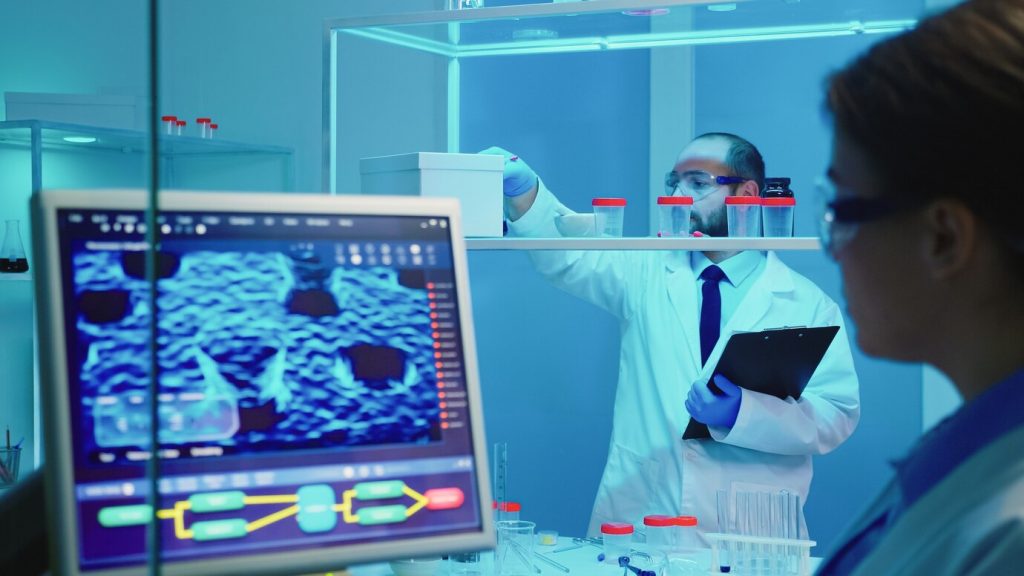
The realm of artificial intelligence (AI) has made profound strides across various industries, and healthcare is no exception. In Malaysia, the integration of AI in cancer treatment represents a transformative shift in medical practice, leveraging cutting-edge technology to enhance early detection, personalize treatment plans, and improve overall patient outcomes. As the nation navigates the complexities of an aging population and an increasing burden of cancer, AI’s potential in revolutionizing the landscape of cancer care has never been more apparent.
A Rising Cancer Burden in Malaysia
Cancer has emerged as one of the leading causes of morbidity and mortality in Malaysia. According to the National Cancer Registry, over 100,000 new cancer cases were diagnosed in 2018, with the number expected to rise in the coming decades. The cancer landscape in Malaysia is dominated by common malignancies such as breast, colorectal, lung, and prostate cancers. With a rapidly aging population and lifestyle factors like poor diet, smoking, and sedentary living contributing to the disease’s prevalence, the need for innovative, efficient treatment options has become increasingly urgent.
Despite advances in cancer treatment over the years, challenges persist in early diagnosis, treatment personalization, and accessibility to quality care. The introduction of AI into this field offers a beacon of hope, aiming to bridge these gaps and enhance Malaysia’s healthcare system’s ability to fight cancer more effectively.
AI and Early Detection: A Game-Changer for Cancer Diagnosis

The first critical step in cancer treatment is early detection, as it greatly influences survival rates. In many cases, especially in developing countries like Malaysia, cancers are often diagnosed at later stages, which limits the available treatment options and diminishes the chance of successful outcomes. Here, AI plays a pivotal role in revolutionizing early detection.
Machine learning (ML) algorithms, a subset of AI, have the potential to analyze vast amounts of medical data far quicker and more accurately than human doctors. In Malaysia, AI-powered diagnostic tools are increasingly used in radiology, pathology, and genomics to identify cancer at its earliest stages. For example, AI software can analyze medical images such as mammograms, CT scans, and MRIs to detect abnormalities that may indicate the presence of cancer. These tools can also provide doctors with predictive insights, helping them make more informed decisions.
In 2021, the Malaysia-based AI company, Thinker Lab, collaborated with local hospitals to introduce AI-powered breast cancer detection tools. By utilizing deep learning techniques to analyze mammography images, the AI system was able to achieve diagnostic accuracy levels that rivaled expert radiologists. Such initiatives are helping bridge the gap in diagnostic capabilities between urban and rural areas, where access to specialized healthcare is often limited.
Personalised Treatment: AI’s Role in Tailoring Cancer Therapies

While early detection is critical, the second component of successful cancer treatment lies in personalised care. Each cancer patient presents a unique set of biological markers, genetic mutations, and health conditions, making one-size-fits-all treatment regimens less effective. Traditional treatment strategies often involve a combination of surgery, chemotherapy, and radiation, but AI is reshaping the way oncologists tailor therapies to individual patients.
In Malaysia, AI algorithms are increasingly being used to analyze genetic data, allowing for the identification of specific mutations that could influence a patient’s response to treatment. The combination of AI with genomic sequencing provides an accurate map of the cancer’s molecular structure, enabling oncologists to choose therapies that target the cancer’s unique characteristics rather than relying on generalized treatment protocols.
A notable example of this is the development of AI tools designed to assist in clinical decision-making, such as IBM’s Watson for Oncology. Hospitals in Malaysia are beginning to implement these AI-powered platforms to support oncologists in selecting the best treatment plan based on a patient’s individual profile, including their genetic information and medical history. By incorporating AI into clinical practice, the treatment process becomes more precise, reducing the likelihood of side effects while increasing the chances of remission.
AI in Cancer Drug Discovery and Research
Beyond diagnostics and treatment, AI is also playing a significant role in cancer drug discovery—a process that typically takes years and billions of dollars. AI accelerates this process by analyzing large datasets of molecular information to identify potential drug candidates, predict their efficacy, and assess their safety.
In Malaysia, AI is increasingly being employed in collaborations between healthcare institutions and biotech firms to shorten the timeline for developing new cancer therapies. For example, the Malaysian government’s investment in AI-driven healthcare innovation through its Digital Economy Blueprint (MyDIGITAL) has encouraged local universities and research institutions to explore AI in drug discovery. These initiatives are designed to position Malaysia as a leader in AI-based biotech innovations.
The use of AI in drug discovery also has the potential to lower the cost of cancer treatment by identifying existing drugs that could be repurposed for cancer therapies. This is particularly important in Malaysia, where healthcare costs can be a barrier to accessing cutting-edge treatments.
Overcoming Barriers: Ethical Concerns, Infrastructure, and Training
Despite AI’s promising prospects in cancer care, Malaysia faces several challenges in fully integrating this technology into its healthcare system. One of the key obstacles is the availability of a skilled workforce capable of developing, implementing, and managing AI solutions. While there has been a steady increase in medical professionals trained in AI and data science, there is still a significant gap in expertise that hinders widespread adoption.
Furthermore, the successful implementation of AI-driven solutions requires significant infrastructure investment. Malaysia’s healthcare system is diverse, with a mix of public and private facilities. Ensuring that AI tools are accessible across the entire system, including rural and underserved areas, requires substantial investment in technology, training, and data management systems.
Ethical concerns surrounding AI in healthcare also need to be addressed. The use of AI in medical decision-making raises questions about accountability and transparency, especially in situations where AI systems may suggest treatment plans that conflict with a physician’s judgment. Ensuring that AI systems are designed with robust safeguards and oversight is crucial in maintaining patient trust and ensuring ethical standards are upheld.
The Path Forward
The future of cancer treatment in Malaysia looks promising, with AI playing a central role in transforming the healthcare landscape. As Malaysia continues to embrace technological advancements, the integration of AI into cancer care has the potential to save countless lives by enhancing early detection, personalizing treatment options, and accelerating drug discovery.

However, this potential can only be fully realized through continued investment in education, infrastructure, and policy support. Collaboration between the government, healthcare providers, tech companies, and research institutions will be key to overcoming barriers and creating an ecosystem where AI can thrive. With the right support and commitment, Malaysia can position itself as a leader in AI-driven cancer treatment, offering hope and better outcomes for patients in the years to come.






